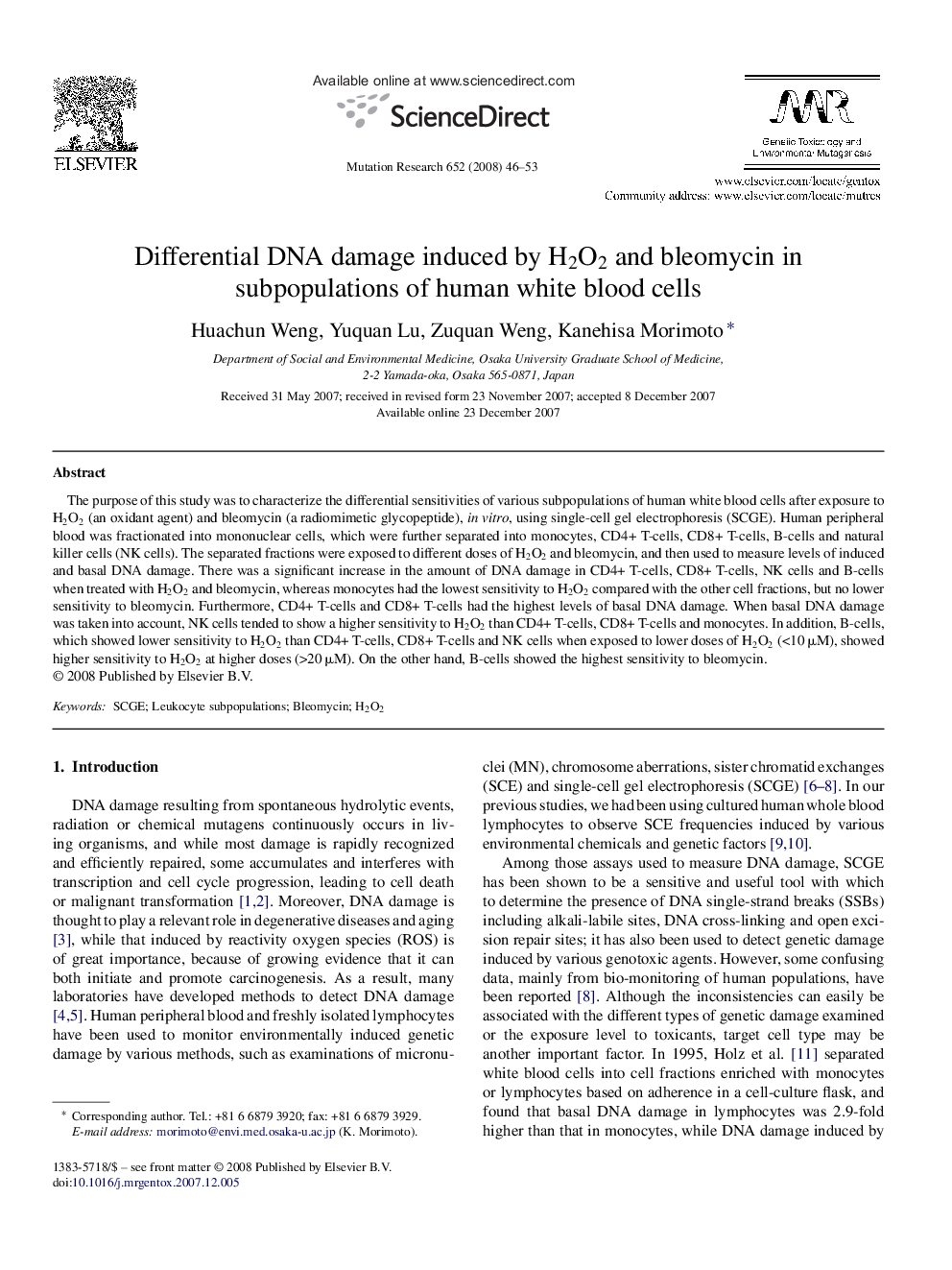| Article ID | Journal | Published Year | Pages | File Type |
|---|---|---|---|---|
| 2148976 | Mutation Research/Genetic Toxicology and Environmental Mutagenesis | 2008 | 8 Pages |
The purpose of this study was to characterize the differential sensitivities of various subpopulations of human white blood cells after exposure to H2O2 (an oxidant agent) and bleomycin (a radiomimetic glycopeptide), in vitro, using single-cell gel electrophoresis (SCGE). Human peripheral blood was fractionated into mononuclear cells, which were further separated into monocytes, CD4+ T-cells, CD8+ T-cells, B-cells and natural killer cells (NK cells). The separated fractions were exposed to different doses of H2O2 and bleomycin, and then used to measure levels of induced and basal DNA damage. There was a significant increase in the amount of DNA damage in CD4+ T-cells, CD8+ T-cells, NK cells and B-cells when treated with H2O2 and bleomycin, whereas monocytes had the lowest sensitivity to H2O2 compared with the other cell fractions, but no lower sensitivity to bleomycin. Furthermore, CD4+ T-cells and CD8+ T-cells had the highest levels of basal DNA damage. When basal DNA damage was taken into account, NK cells tended to show a higher sensitivity to H2O2 than CD4+ T-cells, CD8+ T-cells and monocytes. In addition, B-cells, which showed lower sensitivity to H2O2 than CD4+ T-cells, CD8+ T-cells and NK cells when exposed to lower doses of H2O2 (<10 μM), showed higher sensitivity to H2O2 at higher doses (>20 μM). On the other hand, B-cells showed the highest sensitivity to bleomycin.
